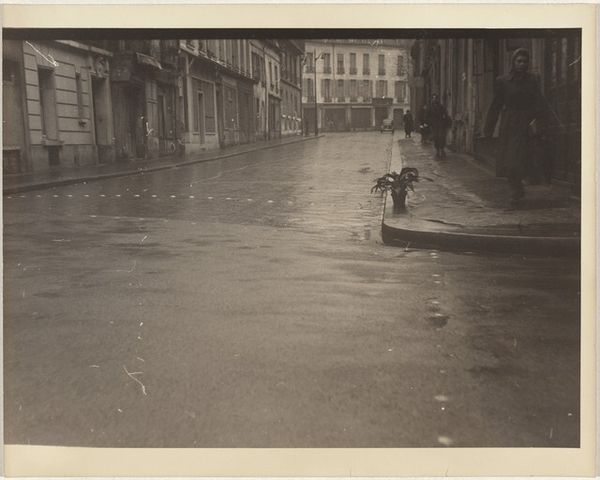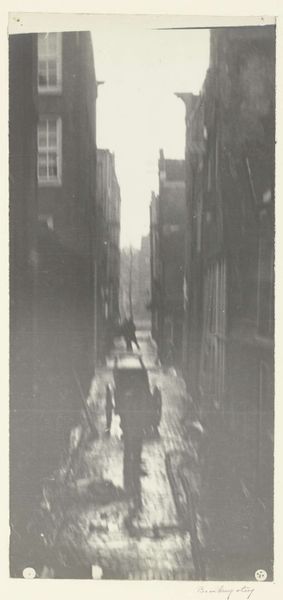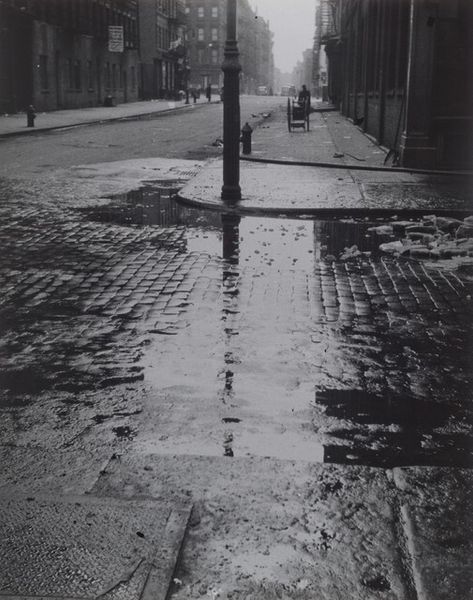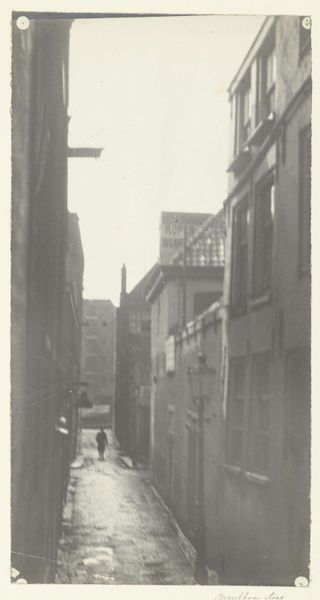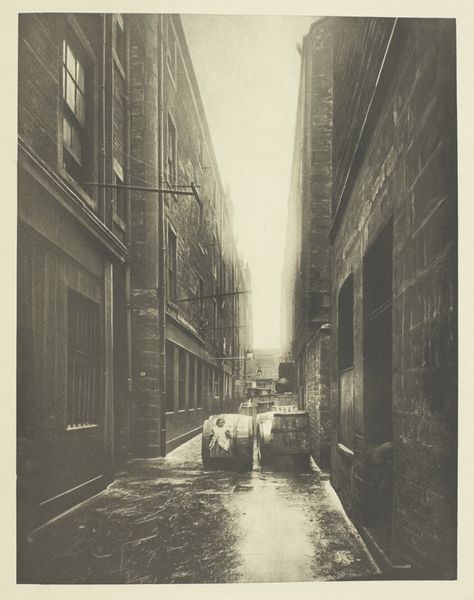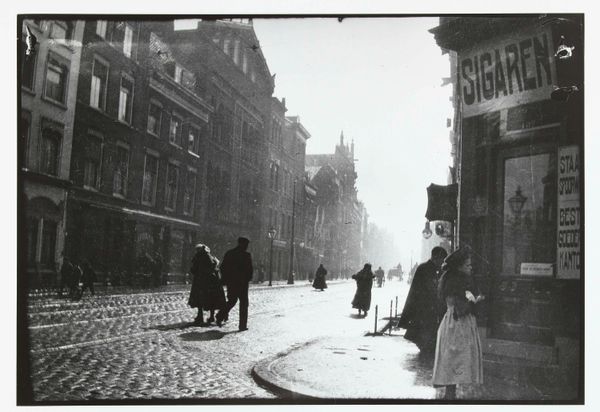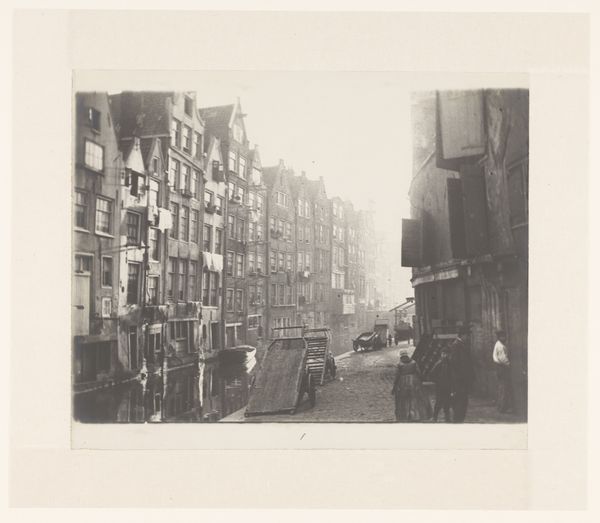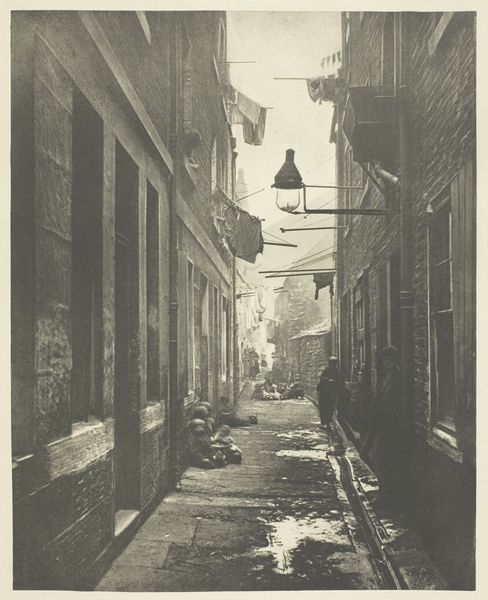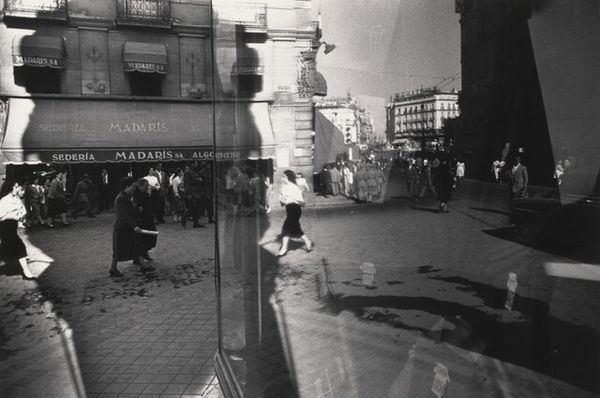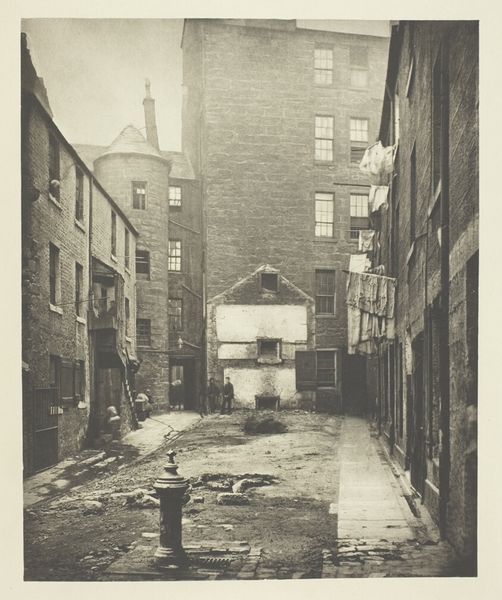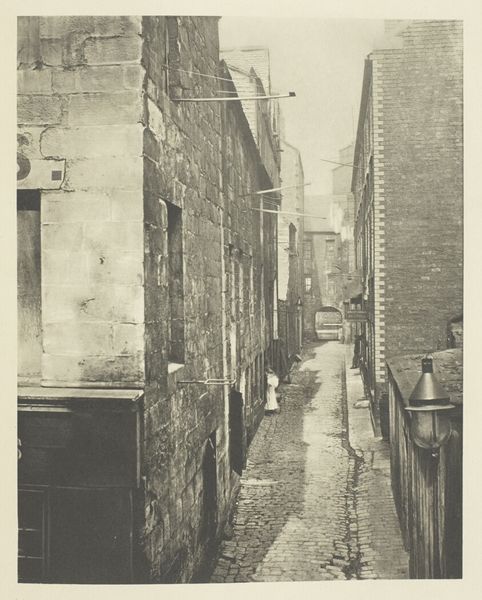
Dimensions: height 505 mm, width 398 mm, height 400 mm, width 2.8 mm
Copyright: Rijks Museum: Open Domain
Curator: This gelatin-silver print, titled "Gezicht op de Looiersgracht in Amsterdam", was created by George Hendrik Breitner sometime between 1890 and 1910. What are your initial thoughts? Editor: The mood strikes me immediately. There's a quiet stillness despite the urban subject matter. The monochromatic palette creates a sense of timelessness, but there's also something almost melancholic about the scene. Curator: Yes, that’s fascinating. Breitner was, after all, documenting a very specific moment in Amsterdam’s history, one of great social and economic change. The canals were, for a time, neglected. This area in particular, once central for tanning leather, speaks to a decline as industry shifted, so the shadows here might even reflect that sense of abandonment. Editor: Looking at the formal composition, the receding lines of the canal and the cobblestone street create a strong sense of perspective, drawing the eye towards the distant buildings. The framing also creates an intriguing juxtaposition between light and shadow, almost a visual echo of the changing times that you just mentioned. Curator: Exactly. Also, consider how the buildings almost seem to be looming—like silent witnesses—their reflections subtly distorting in the water. Those buildings aren’t merely a backdrop. They’re ingrained in the collective memory of the city, constantly watching and shifting. And the bridge functions almost like an opening— beckoning to a new chapter. Editor: It's also the contrast, for me. Note the rough texture of the cobblestones in the foreground and the smooth surfaces of the buildings. Breitner has captured the city's diverse physical textures—an incredibly compelling aspect of realism within his photograph. The detail here makes it striking. Curator: In a sense, Breitner gives us the psychology of a city in transition. Amsterdam in this photograph holds multiple narratives simultaneously – the residue of its industrial past, its current social fabric, and an anticipation for the future, all layered and exposed within a single frame. Editor: I'm now finding it impossible to see it as melancholic! I'd initially thought the monochrome palette and deep shadows signified sadness, but what you said has made me realize how wrong I was: that what I read as melancholic now presents itself to me as profound nuance. Curator: It really is in those subtleties that the meaning resides. Thank you for opening my eyes, too.
Comments
No comments
Be the first to comment and join the conversation on the ultimate creative platform.
